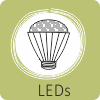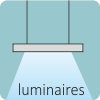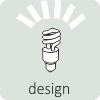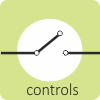Any work space operational during the day has an option to use natural day light for the operational purpose instead of the artificial lights but human response to alternate sources or limited access to the lighting manual controls hinders the energy efficiency and cost savings potential. Switching off the lights in an unoccupied space or during the availability of glare free day light could save up to 50 % of the lighting energy. Automated lighting controls are available in the market under two broad categories – 1) standalone systems (occupancy sensor or day light sensors), and 2) Network control systems (time schedule, central monitoring etc).
Stand-alone systems
These systems use time switches or photocells to switch lights. Photocells can monitor the level of useful daylight and turn off in rows adjacent to windows.
- Occupancy Sensors:occupancy sensors sense the presence of people in a space using passive-infra red (PIR) or ultrasonic motion sensors. The presence of occupants can be detected by using detectors. They can be combined with photo cells. These switches are more appropriate where people pass in and out often like private offices, storage, conference rooms etc.
- Lighting controls:These controls can dim the light when there is plenty of daylight. Such systems can save 20-60% of energy. The most highly optimized lighting control systems combine multiple sensors and a logic processor to control lights.
- Shading Controls:Building occupants can open and close the shades to adjust to light levels in the space. Motorised shades and blinds can be controlled by timers, brightness sensors, or other inputs. E.g. these can close shades at sunset at western walls to avoid glare. Etc. Shading controls can also be part of larger system to maximize visual comfort with minimizing energy use.
Network control systems
A Network control system is termed as intelligent system which uses one or more central computing network to control the lighting operational requirement in indoor and outdoor lighting through manual inputs or programmed inputs. Network control systems respond to changing conditions as per the building functional requirement or schedule. Systems that give more control can be time based, e.g. switching off in lunchtime. Centralized systems rely upon dedicated computers to control either the building services or just the lighting. In case of building services a software program controls the various services like lift, fire alarms, lighting, air conditioning and other equipment’s uses information from transducers and sensors in the building.














